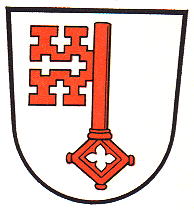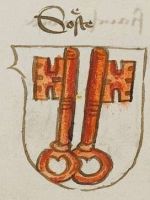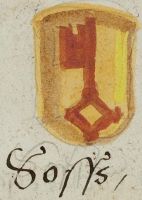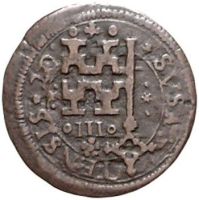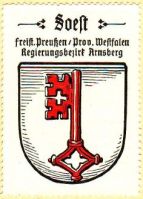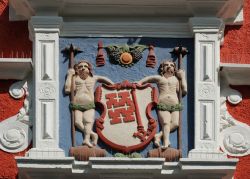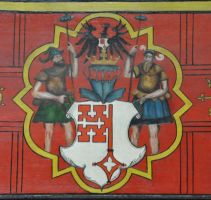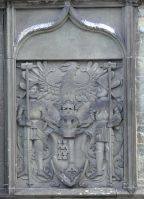Soest (Westfalen): Difference between revisions
Knorrepoes (talk | contribs) m (Text replacement - "{{de}}" to "") |
Knorrepoes (talk | contribs) No edit summary |
||
| Line 1: | Line 1: | ||
{| class="wikitable" | |||
|- style="vertical-align:top;" | |||
|[[File:soest.jpg|center|350 px|alt=Wappen von {{PAGENAME}}/Arms (crest) of {{PAGENAME}}]] | |||
| | |||
'''Country''' : Germany [[File:germany.jpg|60 px|right]]<br><br><br> | |||
'''State''' : [[Nordrhein-Westfalen]][[File:nordrhei.jpg|60 px|right]]<br><br><br> | |||
'''District (Kreis)''' : [[soest (kreis)|Soest]][[File:Soest.kreis.jpg|60 px|right]]<br><br><br> | |||
'''Additions''':<br> | |||
* 1975 Ampen | |||
* 1975 Bergede | |||
* 1975 Deiringsen | |||
* 1975 Enkesen | |||
* 1975 Epsingsen | |||
* 1975 Hattrop | |||
* 1975 Hattropholsen | |||
* 1975 Hiddingsen | |||
* 1975 Katrop | |||
* 1975 Lendringsen | |||
* 1975 Meckingsen | |||
* 1975 Meiningsen | |||
* 1975 Müllingsen | |||
* 1975 Ostönnen | |||
* 1975 Paradiese | |||
* 1975 Ruploh | |||
* 1975 Röllingsen | |||
* 1975 Thöningsen | |||
|} | |||
===Origin/meaning=== | ===Origin/meaning=== | ||
Soest is a rather old city, it received city rights somewhere in the 12<sup>th</sup> century. The city was part of the [[Köln (State)|State of Köln]], and the oldest seal (known since 1170) shows the patron saint of Köln, St. Peter, sitting on a throne, holding a key and church and sitting in front of a city wall. The second seal (known since 1229) shows the same composition. The contra seals showed the patron saint of the city, St Patroklus as a knight. The use of a single key as arms dates from 1375 and was continued even when the rule of Köln ended in 1444. The key is the symbol of St. Peter. | Soest is a rather old city, it received city rights somewhere in the 12<sup>th</sup> century. The city was part of the [[Köln (State)|State of Köln]], and the oldest seal (known since 1170) shows the patron saint of Köln, St. Peter, sitting on a throne, holding a key and church and sitting in front of a city wall. The second seal (known since 1229) shows the same composition. The contra seals showed the patron saint of the city, St Patroklus as a knight. The use of a single key as arms dates from 1375 and was continued even when the rule of Köln ended in 1444. The key is the symbol of St. Peter. | ||
| Line 15: | Line 32: | ||
The great arms, used since 1520, show two knights as supporters and a crest with an eagle, as a symbol of St. Patroklus. | The great arms, used since 1520, show two knights as supporters and a crest with an eagle, as a symbol of St. Patroklus. | ||
<gallery widths=250px heights=200px perrow=0> | |||
File:Soest_(Westfalen)1514.jpg|alt=Wappen von Soest/Arms (crest) of Soest|The arms in a manuscript from 1514 | |||
File:Soest_(Westfalen)16.jpg|alt=Wappen von Soest/Arms (crest) of Soest|The arms in a [[:Category:Windhag city arms|16th century manuscript]] | |||
File:Soest_(Westfalen)c1.jpg|alt=Wappen von Soest/Arms (crest) of Soest|The arms on a 1620 coin | |||
File:soestz1.jpg|alt=Wappen von Soest/Arms (crest) of Soest|Seal from around 1900 | |||
File:soest.hagd.jpg|alt=Wappen von Soest/Arms (crest) of Soest|The arms by [[Otto Hupp|Hupp]] in the [[Kaffee Hag albums]] +/- 1925 | |||
File:soest1.jpg|alt=Wappen von Soest/Arms (crest) of Soest|>The arms on the city hall ([http://upload.wikimedia.org/wikipedia/commons/a/ae/Soest-090816-9866-Wappen-am-Rathaus.jpg source]) | |||
File:soest2.jpg|alt=Wappen von Soest/Arms (crest) of Soest|The arms on Burgomasters chair in the St. Petrikirche, about 1547. (image by Hubert de Vries) | |||
| | File:soestw3.jpg|alt=Wappen von Soest/Arms (crest) of Soest|The arms in the city (image by Hubert de Vries) | ||
</gallery> | |||
[[Civic Heraldry Literature - Germany|'''Literature''']]: Stadler, 1964-1971, 8 volumes. | [[Civic Heraldry Literature - Germany|'''Literature''']]: Stadler, 1964-1971, 8 volumes. | ||
{{de1}} | {{de1}} | ||
Revision as of 08:00, 1 March 2023
|
Country : Germany State : Nordrhein-Westfalen District (Kreis) : Soest Additions:
|
Origin/meaning
Soest is a rather old city, it received city rights somewhere in the 12th century. The city was part of the State of Köln, and the oldest seal (known since 1170) shows the patron saint of Köln, St. Peter, sitting on a throne, holding a key and church and sitting in front of a city wall. The second seal (known since 1229) shows the same composition. The contra seals showed the patron saint of the city, St Patroklus as a knight. The use of a single key as arms dates from 1375 and was continued even when the rule of Köln ended in 1444. The key is the symbol of St. Peter.
The great arms, used since 1520, show two knights as supporters and a crest with an eagle, as a symbol of St. Patroklus.
The arms in a 16th century manuscript
The arms by Hupp in the Kaffee Hag albums +/- 1925
>The arms on the city hall (source)
Literature: Stadler, 1964-1971, 8 volumes.
